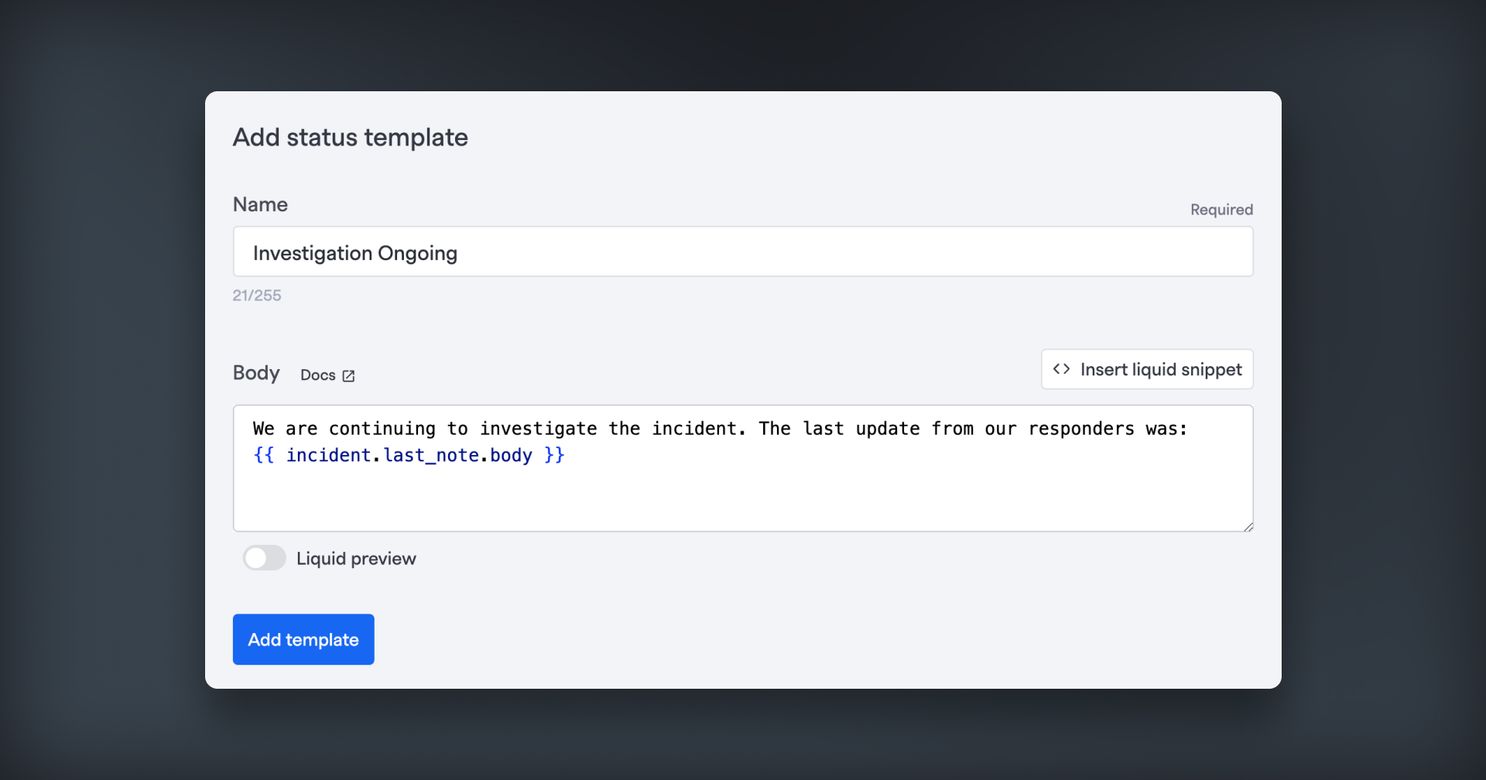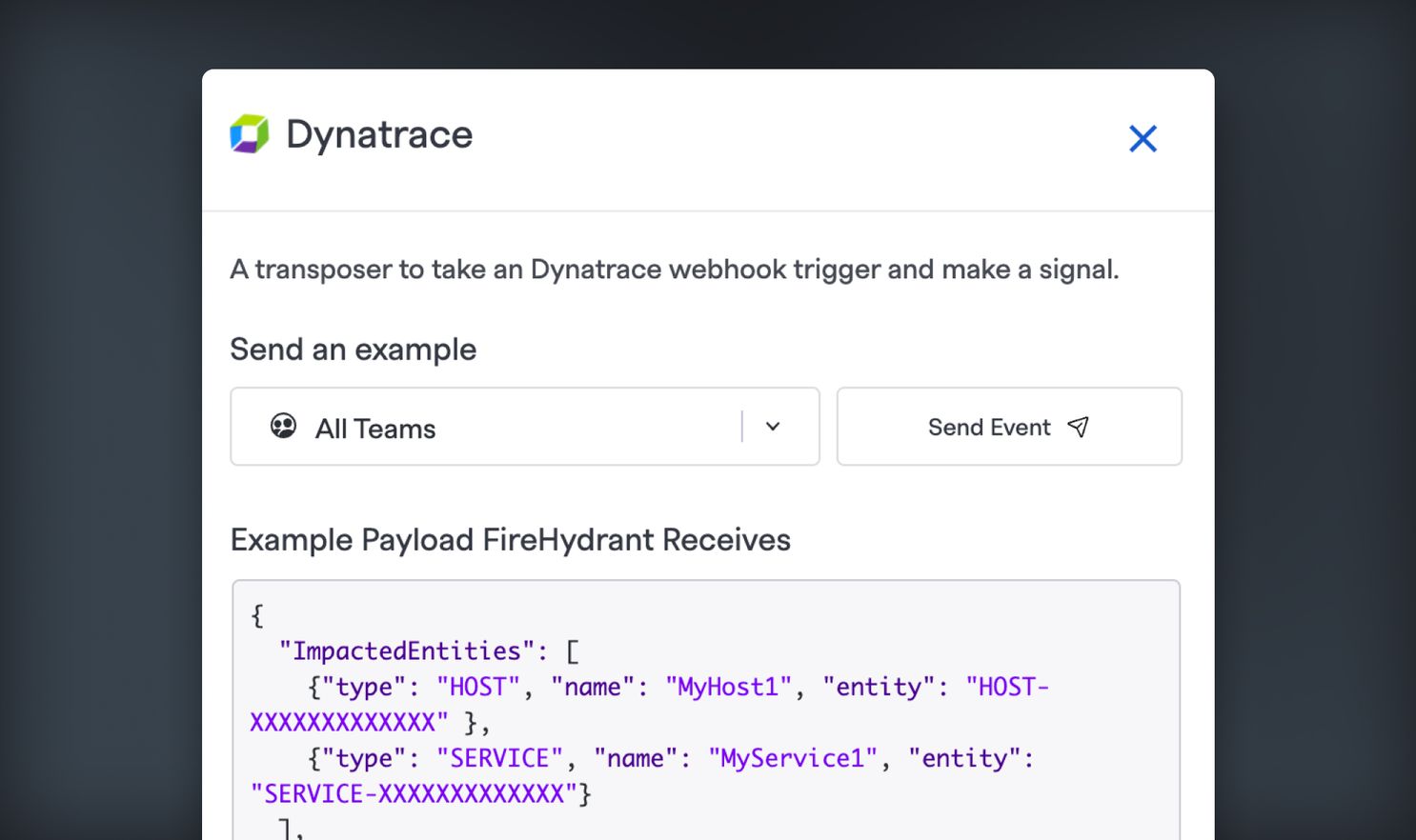
Signals Webhooks Beta, Teams Targeting for Event Sources, Liquid in Status Templates, and more!
Signals Webhooks in Beta#signals-webhooks-in-beta

We love that our customers are finding value in Signals and want to continue expanding on custom workflows. So we released Signals Webhooks in beta - building on our existing Webhooks functionality, FireHydrant can now send Webhooks to external destinations on any Signals/Alert action. Find the documentation here.
Liquid in Status Templates#liquid-in-status-templates

FireHydrant now supports using Liquid templating when configuring Status Templates. Templates with dynamic incident data help reduce the cognitive load for your responders so they can quickly post updates and immediately return to the issue at hand.
Dynatrace Event Source#dynatrace-event-source

FireHydrant now supports Dynatrace as an event source for Signals alerts. You can find it in the table on the Event Sources page. Click View on the right-most column of the table to see an example payload and how FireHydrant translates it into an event.
Other Fixes and Improvements#other-fixes-and-improvements
- 💅 We've officially added SMS support for India and SMS + Voice support for Poland. The numbers for each have also been added to the vCard
- 💅 You can now select FireHydrant Escalation Policies as targets when using the Assign a Role Runbook step.
- 💅 We now show a more helpful error message when assigning a team fails in Slack
- 💅 We removed the checkbox for Internal Status Page when running
/fh updatefrom Slack, and all updates posted to the incident will always post to Internal Status Pages - 💅 We made performance improvements to the login page and reduced the time to First Contentful Paint (FCP) and Largest Contentful Paint (LCP) by 66%. We also reduced the total blocking time from 10ms to 0ms
- 💅 We adjusted the responsiveness of components in our web application, particularly around the ~1300px width
- 💅 FireHydrant status pages received updates to some light mode styling and timestamps now all show in the user's local timezone, showing both UTC and local times when hovered over
- 💅 FireHydrant status pages also now show ongoing incidents' current milestones as well as severities and priorities at the top of the main status page
- 💅 We updated the names of several Runbook steps, namely Microsoft Teams and Slack steps, to be more explicit
- 💅 We now support creating private Runbooks from our Terraform provider
- 🐛 Fixed a bug where searching and filtering wasn’t working when attempting to link external PagerDuty services to FireHydrant components in Catalog
- 🐛 Fixed an issue where users will still seeing error messages in Jira about our legacy capability to link Jira tickets to Tasks
- 🐛 Fixed an issue where the original authorized user couldn’t re-authorize the Jira integration
- 🐛 Fixed an issue where only the first of multiple linked external Jira incident tickets were updated when the incident was updated
- 🐛 Fixed an issue where users could inadvertently click “Declare” multiple times in Slack when there is a connectivity issue, resulting in duplicate incidents declared
- 🐛 Fixed unclear documentation in API docs for metrics and regenerated the Go client
- 🐛 Fixed an issue in Slack where
/fh privatewas still using a deprecated modal. It now is aliased to/fh restrictand both will open the same, new modal - 🐛 Fixed an issue/inconsistency in Slack where some users were tagged and added to the channel while others were not when assigned tasks or roles